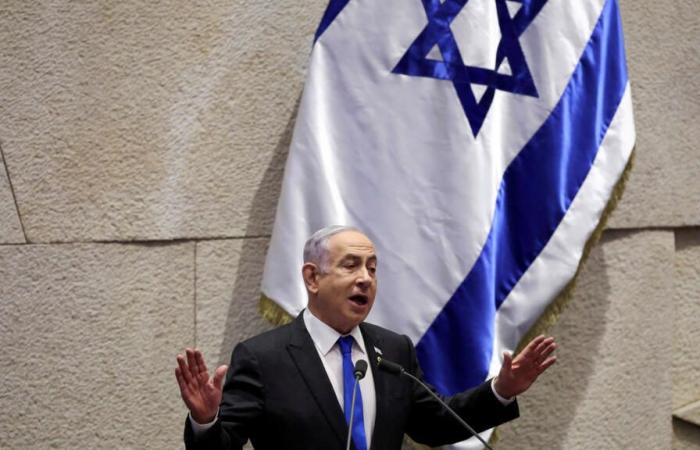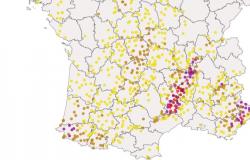AFP Videos – France
Israel says it is checking whether Hamas leader Yahya Sinouar was “eliminated” in Gaza
The Israeli army announced Thursday that it was verifying whether Hamas leader Yahya Sinouar had been “eliminated” during an operation in the Gaza Strip, which could be a decisive blow to the Palestinian Islamist movement it has been fighting since more than a year.Yahya Sinouar, radical activist and man in the shadows, is considered one of the masterminds of the attack of unprecedented scale carried out by Hamas on October 7, 2023 on Israeli soil, which started the war in the Palestinian territory and ignited the powder in the region. Aged 61 and leader since 2017 of the Palestinian Islamist movement in Gaza, he was named political leader of Hamas in early August after the death of Ismaïl Haniyeh , killed in Tehran on July 31 in an attack blamed on Israel. “During the army’s operations in the Gaza Strip, three terrorists were eliminated,” the army said in a statement. Israeli forces are “verifying the possibility that one of the terrorists is Yahya Sinouar,” and “at this stage, the identities of the terrorists cannot be confirmed,” the statement added. An Israeli security source said DNA analysis were carried out on a body to confirm whether it was indeed Sinwar. Israeli Defense Minister Yoav Gallant wrote shortly after on the social network X: “We will reach every terrorist and we will eliminate them.” These statements intervene in an explosive context in the Middle East, where Israel has been shelling the positions of Hezbollah in Lebanon since September 23, which had opened a cross-border front against it the day after October 7 in support of Hamas. A week later, on October 30 , the Israeli army launched ground operations in southern Lebanon to combat the Lebanese Islamist movement. At midday Thursday, strikes targeted several regions in the south and east of Lebanon, Hezbollah strongholds with the southern suburbs of Beirut, according to images from AFPTV and the official Lebanese agency. Earlier, an Israeli strike targeted Hezbollah’s “weapons warehouse” in Latakia in Syria, stronghold of President Bashar al-Assad, leaving two injured, according to Syrian media and the Syrian Observatory for Human Rights (OSDH). The United States, Israel’s ally, for its part announced that it had used B-2 stealth strategic bombers for the first time to strike five underground munitions depots of the Houthis, who control large swaths of Yemen and carry out attacks against Israel and the ships allegedly linked to them, in support of Hamas. – “Stop regional escalation” -After weakening Hamas in Gaza, Israel shifted the bulk of its military operations to the Lebanese front. A building in central Beirut, housing the Al-Jazeera channel and the embassies of Norway and Azerbaijan, was evacuated on Thursday following calls attributed to Israel urging people to leave the premises, a Lebanese security source told the AFP. In almost a month, at least 1,373 people have been killed in the country, according to an AFP count based on official data, with the UN recording nearly 700,000 displaced people. Iran, ally of the Syrian regime , Houthi rebels, Hezbollah and Palestinian Hamas, threatened Thursday to “painfully” attack Israel if it struck targets “in Iran or in the region”, in response to the missile attack carried out by Tehran on the Israeli territory on October 1 to which Israel swore to respond. This attack was presented by Iran as retaliation for the assassination of Ismaïl Haniyeh, attributed to Israel, and that of Hassan Nasrallah, the leader of Hezbollah, killed in an Israeli strike on September 27 near Beirut. The head of Iranian diplomacy, Abbas Araghchi, met Thursday in Cairo with Egyptian President Abdel Fattah al-Sissi. They discussed the “need to stop regional escalation” and achieve a ceasefire in Lebanon and Gaza, according to the Egyptian presidency. Hezbollah claimed Thursday to have fired rockets against Israeli troops near the Syrian Golan Heights annexed by Israel, and destroyed two Israeli tanks in southern Lebanon. Israel claims to want to neutralize Hezbollah at the border to allow the return to the northern Israel of some 60,000 people displaced by its incessant shooting for a year. – 14 dead in Gaza – In the Gaza Strip, at least 14 people were killed Thursday in an Israeli strike on the Abou Hussein school sheltering displaced people in the Jabalia camp, in the north, according to two hospitals in the area, the Israeli army indicating that it had targeted Palestinian fighters. Jabalia has been surrounded and shelled since October 6 by the Israeli army which claims that Hamas is trying to rebuild your strength. The fate of hundreds of thousands of Gazans trapped in fighting is at the center of international concern. Some 345,000 Gazans will face “catastrophic” hunger this winter, compared to 133,000 currently, the UN warns in a published report THURSDAY. The head of the UN agency for Palestinian refugees (Unrwa), Philippe Lazzarini, pointed out a “real risk” of famine in the besieged and devastated Palestinian territory, accusing “certain members of the Israeli government” of make “a weapon of war”. At least 42,438 Palestinians were killed, mostly civilians, in the Israeli offensive in Gaza, according to data from the Hamas government’s Health Ministry, deemed reliable by the UN. Hamas attack on October 7 resulted in the deaths of 1,206 people in Israel, the majority civilians, according to an AFP count based on official Israeli data and including hostages who died or were killed in captivity in Gaza.bur-anr/ bfi






